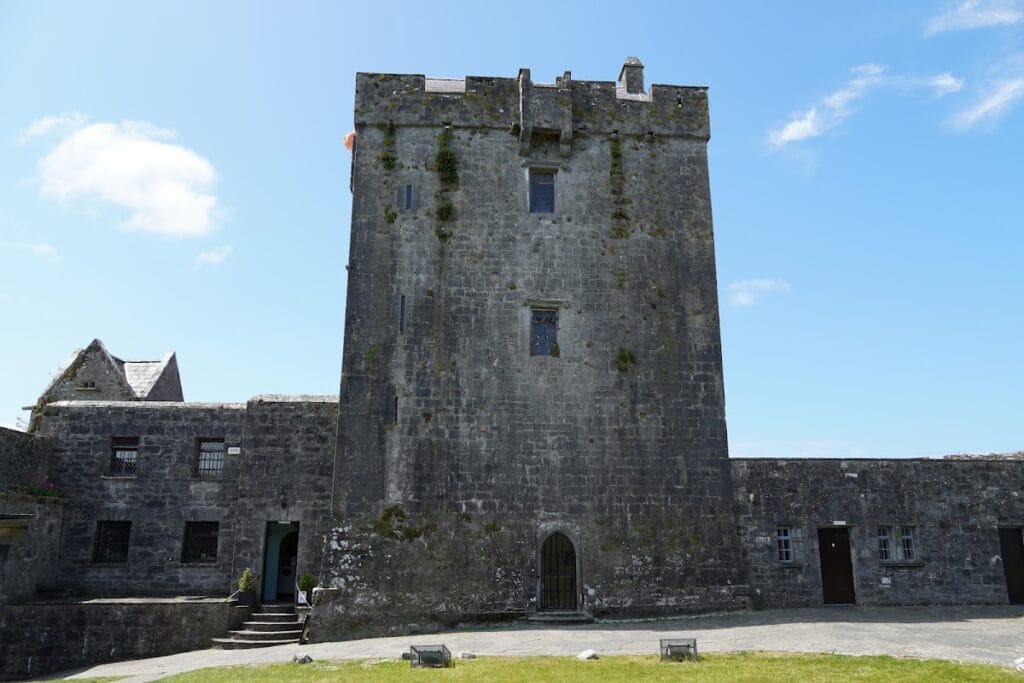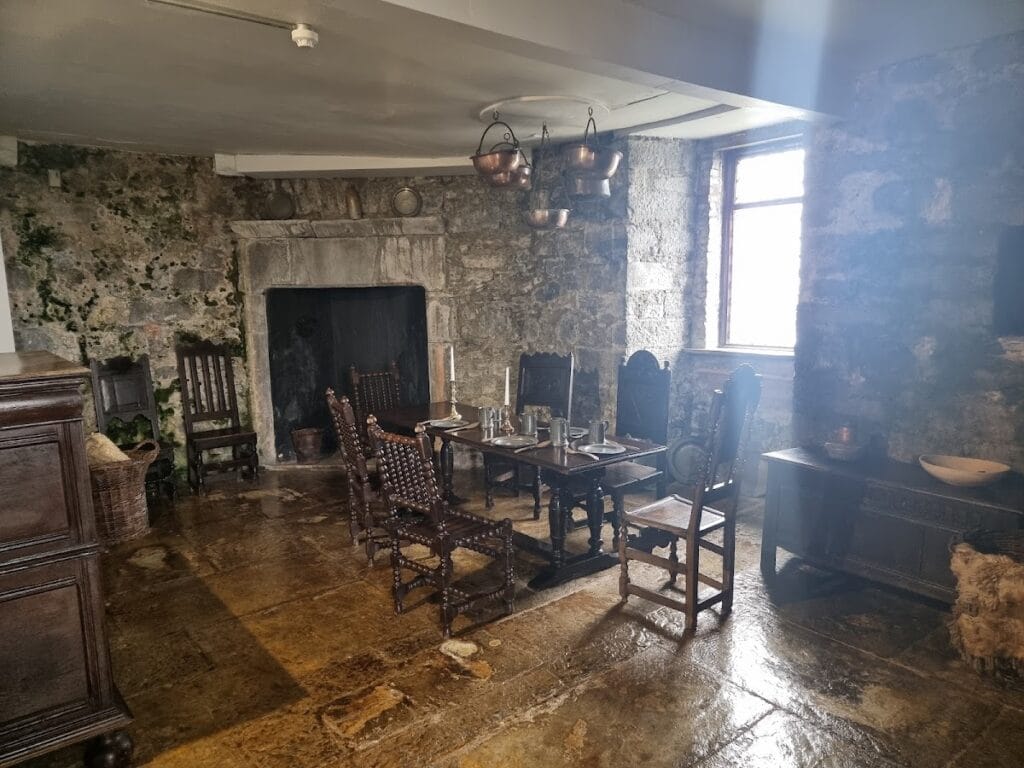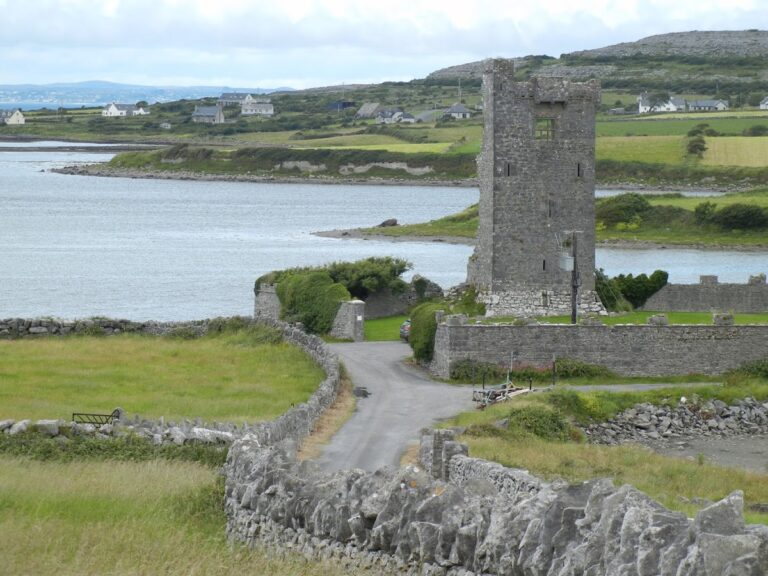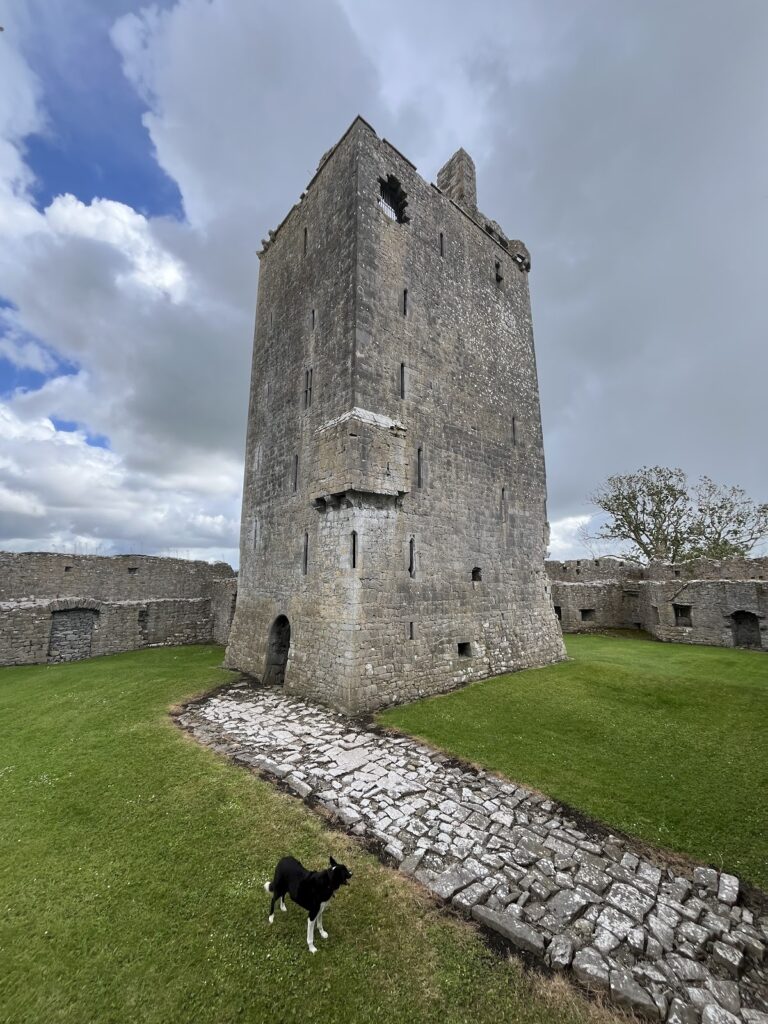Dunguaire Castle: A 16th-Century Gaelic Irish Tower House in Kinvara, Ireland
Visitor Information
Google Rating: 4.3
Popularity: Medium
Google Maps: View on Google Maps
Official Website: www.dunguairecastle.com
Country: Ireland
Civilization: Unclassified
Remains: Military
History
Dunguaire Castle stands near the town of Kinvara in Ireland and was constructed by the Gaelic Irish during the early 16th century. Its origins are closely connected to the ruling families of the region traditionally known as Uí Fiachrach Aidhne.
Originally built in 1520 by the Hynes family (Ó hEidhin clan), who were chieftains of the Coill Ua bhFiachrach area, the castle served as a fortified residence within their territorial lands. The site itself holds deeper historical significance, as it is linked by tradition to King Guaire Aidne mac Colmáin, a 7th-century monarch of Connacht. While the current stone tower dates to the 1500s, local lore suggests that an earlier defensive structure may have existed here, reflecting the long-standing importance of this location in controlling access to the nearby Galway Bay.
Following the Gaelic period, ownership of the castle passed in the 1600s to Oliver Martin. He was the father of Richard Martin, a notable Irish figure, and the estate remained in the Martin family for several generations up to the early 20th century. The castle later fell into disrepair before it was acquired and restored by Oliver John Gogarty, an Irish poet and surgeon. During Gogarty’s tenure, the castle became a gathering place for leading figures of the Celtic Revival movement, hosting visitors such as W.B. Yeats, George Bernard Shaw, Lady Gregory, and John Millington Synge. This revival aimed to reclaim and celebrate Ireland’s cultural heritage in the late 19th and early 20th centuries.
In 1954, Lady Christabel Amphlett purchased Dunguaire Castle and completed the restoration efforts begun by Gogarty, preserving it as a historical monument. Subsequently, the castle became managed by Shannon Development, an organization dedicated to promoting Ireland’s heritage sites.
Dunguaire Castle has also entered popular culture as a filming location. In 1969, it appeared as Boyne Castle in the Disney movie “Guns in the Heather,” and a decade later, it doubled as a Scottish castle in the 1979 film “North Sea Hijack.”
Remains
Dunguaire Castle is a well-preserved example of a 16th-century Irish tower house, featuring a stone-built tower rising approximately 75 feet high. This fortified residence was constructed using locally sourced stone, assembled to create strong defensive walls typical for the period. The entire structure exhibits careful masonry work consistent with other tower houses erected during that century across Ireland.
The castle’s tall tower served both residential and defensive roles, staying strategically positioned on the southeastern shore of Galway Bay, close to Kinvara. The surrounding walls enclose the tower, forming a secure courtyard that supported the living quarters and essential activities of its inhabitants. Though detailed internal features are not recorded here, the restoration has returned the building to excellent condition, stabilizing the walls and preserving its verticality.
Today, the grounds of Dunguaire Castle remain intact and accessible, maintaining the spatial layout of the original fortification. Facilities introduced in modern times accommodate medieval-themed banquets, supported by the castle’s enclosed spaces suitable for such gatherings. The site’s location within the historic lands of the Uí Fiachrach Aidhne clan highlights its continued connection to the regional heritage stretching between natural landmarks such as the Burren region to the west and Slieve Aughty to the east.
No specific decorative carvings, inscriptions, or recovered archaeological artifacts like pottery or tools have been documented from the site. The castle’s importance largely derives from its imposing form, restored state, and association with local history rather than ornamental features. Its enduring presence and solid construction contribute to an understanding of the social and political structures in early modern Ireland, particularly among Gaelic families who maintained traditional authority during this era.










